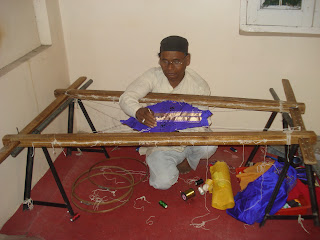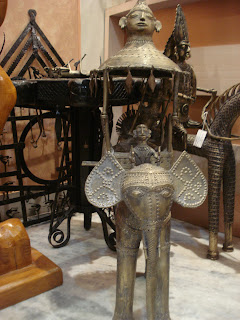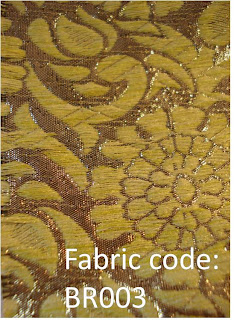This is an amazing article I read in the newspaper recently. Thought I d share with you.
Is there an entrepreneur in you?
--By Darshana Gaurav Jain
Some student in Warren G Tracy’s class quoted a supreme fact about entrepreneurship:
“Entrepreneurship is living a few years of your life like most people wont ….
So that you can spend the rest of your life like most people can’t.”
‘Entrepreneur’ ….The only specifics which made this word exclusive to me in my early school days were – its spelling and its pronunciation. Today, one more element has been added to its exquisiteness … its ‘meaning and interpretation’. So what does this word actually mean? The origin of this word can be traced from two french words ‘entre’ meaning in between and ‘prenuer’ meaning job. Though the formal definition of ‘entrepreneur’ restricts to – ‘ a person who sets up a business or businesses’, the more bona fide version speaks about its righteous connotation. It essentially marks a difference between the terms ‘businessman’ and ‘entrepreneur’, the core distinction criterion between them being ‘innovation’. An entrepreneur sets up his business using his own innovative ideas and ways whereas a business for a businessman can be inherited, purchased or even donated. An ‘entrepreneur’ thus is a wider concept.
So much introduction for the term ‘entrepreneur’ can be deemed to be moderate enough to instigate a discussion on ‘entrepreneurships’ or ‘enterprises’. ‘Enterprises’ are business organizations set ip and built by entrepreneurs.
In the words of Michael Gerber “An entrepreneur builds an enterprise; a technicians build a job”. Well apart from building a job, we are often found associated with it in many ways like- we dream about a handsomely paid job; we can talk eternally about jobs (past, present and future); We don’t leave any stone unturned to compare our job with others; we take education and degrees to eventually find a job; some compromise their lives thoroughly and extremely for their jobs; and what more – habitually in the marriage market, our elders rank our prospective soul mates also on their basis of their ‘JOBS’!!! Hence, radically , these jobs should definitely occupy an imperative place in our lives. And accordingly they do!
Education system in our country does its duty devotedly and keenly to train us for a job, though it may not guarantee us one! However, apparently there is no institute , college university or even an occasional workshop conducted to train the future backbones of the country for building an enterprise. And even if ther is any such arrangement, it isn’t so popular in the masses.
In our country, the word ‘career’ is yet to popularly embrace ‘enterrises’ or ‘businesses’. There are several such youths with unmatched enterprising potential, with inherent creative excellence, with peerless courage to risk the unusual and loads of similar traits which can make them successful entrepreneurs. But unfortunately, a considerable bunch of them is discouraged at the very inception stage – at the dream level itself! Okay…The limited lot is permitted to take ‘a’ chance… But mind you! ‘a’ here should necessarily read as ‘one’!
And thus with the ‘Mistakes Strictly Prohibited’ board constantly hovering over, the endeavor, launches with a taxing note! Unsurprisingly, an extensive lot gets filtered out in this round since their concentration on ‘how not to fail’ is more than ‘how to succeed’. After all as we all know, “In order to succeed, your desire for success should be greater than your fear of failure”. And finally thus, the lucky and selected few make it to the top!
The reason behind this is probably deep rooted in our culture itself. Though I hate to confess this, fact is – neither do we want to think differently, nor can we accept such people. Somewhere, we have standardized our ways of living (and probably also of generations ahead), perhaps long before we understand the meaning of ‘living’. The result is – inch by inch we start losing connection with our dreams. We become forced victims of the practicalities of that lane of life which once we hated to follow.
Coming back to entrepreneurship, though traditionally they exclude businesses hired, purchased or inherited, I personally consider even these businesses as entrepreneurships, if they are re launched with an innovative technique. If you can give shape to someone else’s pet project, if you can complete someone else’s venture with your creative mind’s eye and hard work, it definitely earns you the ‘entrepreneur’s’ label.
On that note, enterprise can also be a dealership or manufacturing of a product thought of and conceived by someone else. For example, Bisleri – the product was thought of, created nad manufactured by Felice Bisleri of Italy initially, but was made a household name in India by parle, after its purchase by this Indian company in 1969. This was definitely an entrepreneurial effort.
On a broader horizon, there is yet another reason to motivate young entrepreneurs – to solve or atleast minimize the chronic and disastrous unemployment problem in India. The outcome is conspicuously clear- We Indians wont to have to migrate to so many odd countries to find that bread earning source, or get settled for underpaid jobs in our country.
Well, the core cause behind this problem is India’s ever increasing population. But it is really noteworthy to see how countries like China and Japan have made use of their masses. They have successfully converted their ‘liability’ into their ‘asset’.
There are many examples which speak about their achievements. Like ‘Diwali’ is the most important festivals of Indians, but every household today is illuminated extensively by lanterns and lightings from China. Be it kitchen towels or highly technical electronic gadgets, our markets are flooded with them. The popularity of these products lies in their cheapest and most affordable price.
And this affordable price is the result of cheaper labor available there. Unfortunately, India is yet to tap this ‘cheap labor’ quotient available here.
One doesn’t discover new lands without consenting to lose sight of the shore for a very long time.
-Andre Gide
However, it does require tons of courage, loads of knowledge, oodles of creativity, piles of encouragement and support, liberal patience and bunch of zeal to don the cap of an entrepreneur.
Another imperative point about entrepreneurships, I once happened to read, is the time required to season a business. You might have a great recipe for a great pickle … but you need time for the flavors to emerge. Entrepreneurship is not a one time effort, it is a journey. So focus and patience are further vital ingredients of a good entrepreneurship.
All in all, to end on a sweet but firm note, I would say- having good entrepreneurs is the need of the age. After all, it was this entrepreneurial effort behind the makeover of ‘Dhirajlal Hirachand Ambani’ to Dhirubhai Ambani’!
So don’t surrender so easily to the criticisms and needless fears of masses, if you posses that guts to ask yourself life changing questions. Not all want to step into the actors’ shoes. Infact majority are comfortable in their audience’s seat. But remember –
If you are going to ask yourself life changing questions ……
Be sure to do something with the answers!!!
Bo Bennett

















































